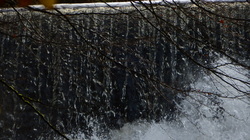
Water truly is the conveyer of bad news. It is also essential for our survival. As the universal solvent, it is the solution space for biochemistry. It acts as a temperature regulator, preventing sudden rises in our internal temperatures. It cushions our organs from damage and dilutes our toxic nitrogenous waste as urine. In many organisms it provides the mechanical support as a hydroskeleton. Humans are particularly vulnerable to dehydration, with symptoms becoming apparent when just 2% of our water is lost, with losses above 15% being fatal in most cases.
Water is essential for agriculture. Indeed some of the earliest evidence of farming is represented by the appearance of irrigation ditches in Sumeria and Babylon. Today, crop irrigation leads to a build-up of salts, destroying the soil, while drought and flood are equally disastrous.
Deforestation has the potential to greatly disrupt water supply to the plains of Brazil. Water evaporating from tree leaves in the Amazon forest forms the main source of water for rainfall on the Brazil Plains. Removal of the forest means that water is not evaporated, and instead flows out to sea, threatening the Cerrado with extreme drought.
Civil war, increasing population, deforestation, increasing agricultural pressures and climate destabilization all play a role. In Tanzania the disappearance of the Kilimanjaro glacier will have a significant impact, as will reduced glacial melt for Peru. Many countries will fall below the acceptable minimum levels of water during the next decade. We are draining aquifers of water at a rate higher than their rate of replenishment.
Already, the withdrawal of freshwater in quantities and at rates exceeding natural renewal capacities is documented in many parts of the world including China, India, Mexico, the Middle East, the Mediterranean region, Central Asia, Australia, southern Africa and the USA. The Aral Sea, formerly the fourth largest lake in the world has dried up, due to its feeder rivers being diverted for agriculture. Its disappearance has had wide-ranging impacts, from the collapse of fishing industry to regional climate destabilization.
Meanwhile glacial melt in the Himalayas threatens water flow in the Indus, Ganges, Brahmaputra, Irrawaddy, Mekong, Yangtze, and Yellow rivers, all of which have their sources in the Himalayan range. It is estimated that by 2100 AD, there will be a 30% decline in the Indus, the most important river in Pakistan. Agricultural losses are estimated at 8-24% in maize, soybean, wheat and rice by 2070 due to irrigation issues.
The groundwater footprint (GF) is the land area required to supply sufficient rainwater to underground aquifers in order to replace use of this water, divided by the area of the aquifer. The higher the value, the greater the area needed. Globally, 131 billion km2 is required to offset groundwater use, which is 3.5 times more area than is available. Thus we are unsustainably using groundwater. This figure rises to >20 for High Plains (USA), North Arabian, Upper Ganges and Western Mexico aquifers, indicating that these areas are at high risk of draining aquifers completely, with devastating consequences. The Ogallala Aquifer (responsible for 30% of the irrigation water used by the US) is being emptied at record rates, with an average drawdown of 4 m across the eight states it underlies, and water levels have dropped by over 40m in some areas.
Our obsession with carbon has led us to ignore almost completely the cost of our lifestyles in terms of water. We are consumed with the carbon footprint of our foods, but ignore the water footprints. Water footprints of common produce (including irrigation and processing) are huge:
Beef 1kg 15400 litres/kg
Pork 1kg 6000 litres/kg
Apple 1 125 litres per apple
Apple Juice 1 litre 1140 litres water per litre
Banana 1 160 litres per banana
Orange 1 80 litres per orange
Pizza margherita 1 1260 litres per pizza
Pasta 1kg 1850 litres /kg
Olives 1kg 3020 litres /kg
Egg 1 200 litres per egg
Cotton tee-shirt 1 2500 litres per tee-shirt
Pair of jeans 1 2500 litres per pair
Chocolate bar 100g 1700 litres per 100g
Cheese 1kg 5060 litres/kg
Wine 1 bottle 650 litres per bottle
Beer 0.5 l 148 litres per 0.5 litre beer
So to save water, drink beer not wine (or better still, drink water!), eat pork not beef, peel an orange, not a banana and stay clear of a plate of pasta, feta cheese and olives!
A final sector in which water consumption is often ignored is the energy sector. Focus has been solely on the carbon footprint of energy production, rather than the associated water footprint. The second table, below, shows the water requirements for a range of energy production methods. As can clearly be seen, green fuels such as ethanol use large amounts of water compared with other fuels. Given the already threatened water supplies, this could pose a significant threat to water security and demands re-evaluation in terms of sustainability. Hydraulic power has a different issue: methane production. When large dams are built the flooded vegetation releases large amounts of methane, a powerful greenhouse gas.
Process litres H2O/MWh
Geothermal 20
Petroleum extraction 40
Oil refining 80-150
Oil shale surface retort 680
Nuclear power plant, closed loop cooling 950
Nuclear power plant, open loop cooling 94,600-227,100
Corn ethanol 2,270,000-8,670,000
Soybean biodiesel 13,900,000-27,900,000
A fundamental point that I have stressed in my most recent book, Sustainable Economics: Context, Challenges and Opportunities for the 21st-Century Practitioner, is that there are three horsemen of the modern apocalypse, not just one. We will fail if we focus only on carbon. By the time we solve the carbon problem (likely when fossil fuels run out), the other problems will have already destroyed us. For any hope, we must stop the reductionist thinking that has led us to the predicament that we are in, and, instead, embrace systems thinking. In other words seek sub-optimal solutions that work across all of the problems, rather than optimizing solutions to a single issue while ignoring the continuing chaos surrounding us. Ignore the manatee in the room at your cost.
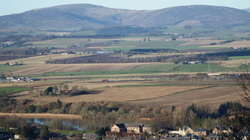
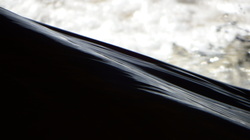

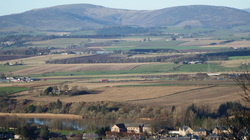
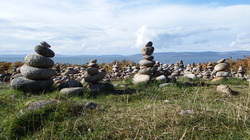
 RSS Feed
RSS Feed